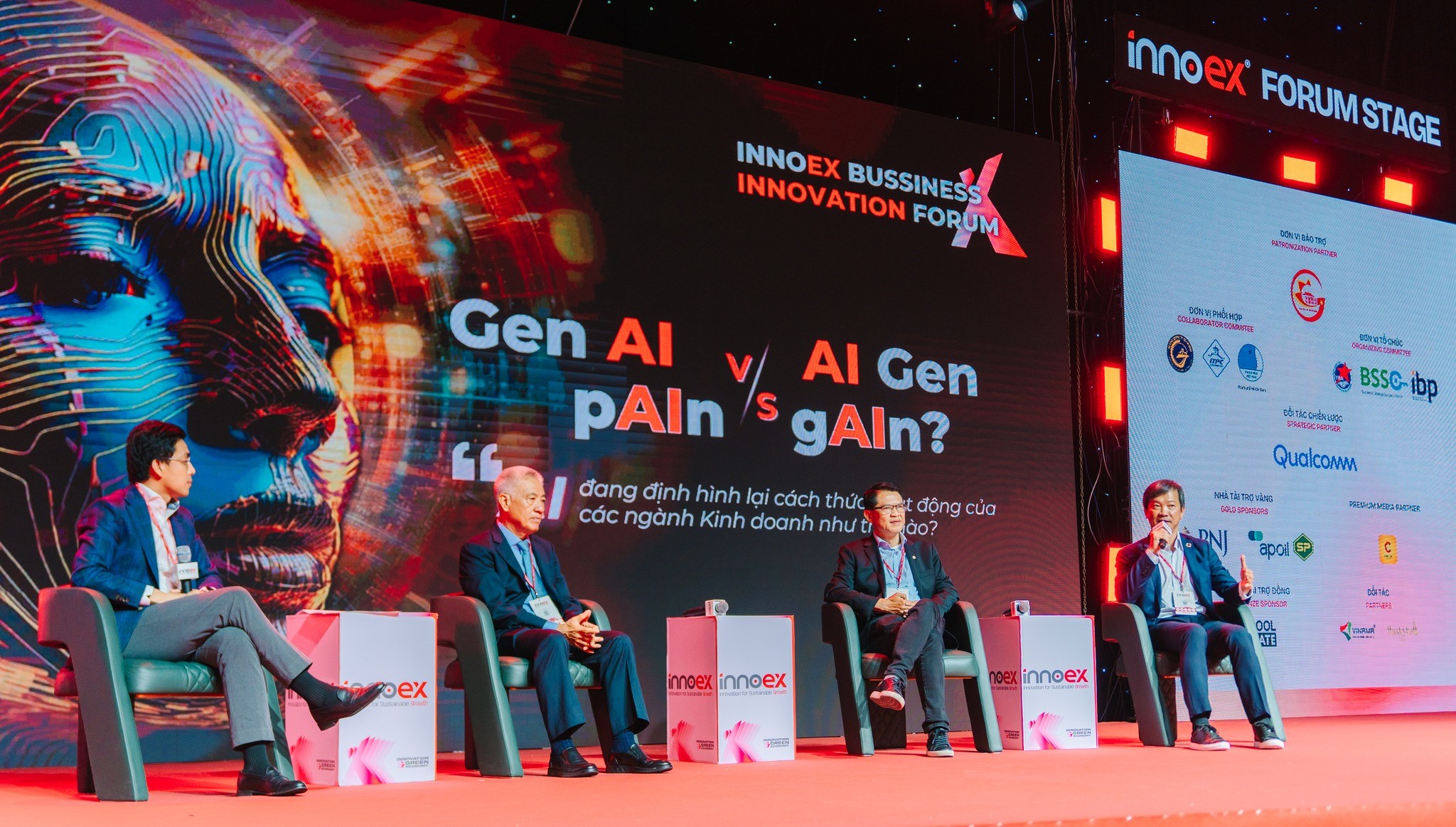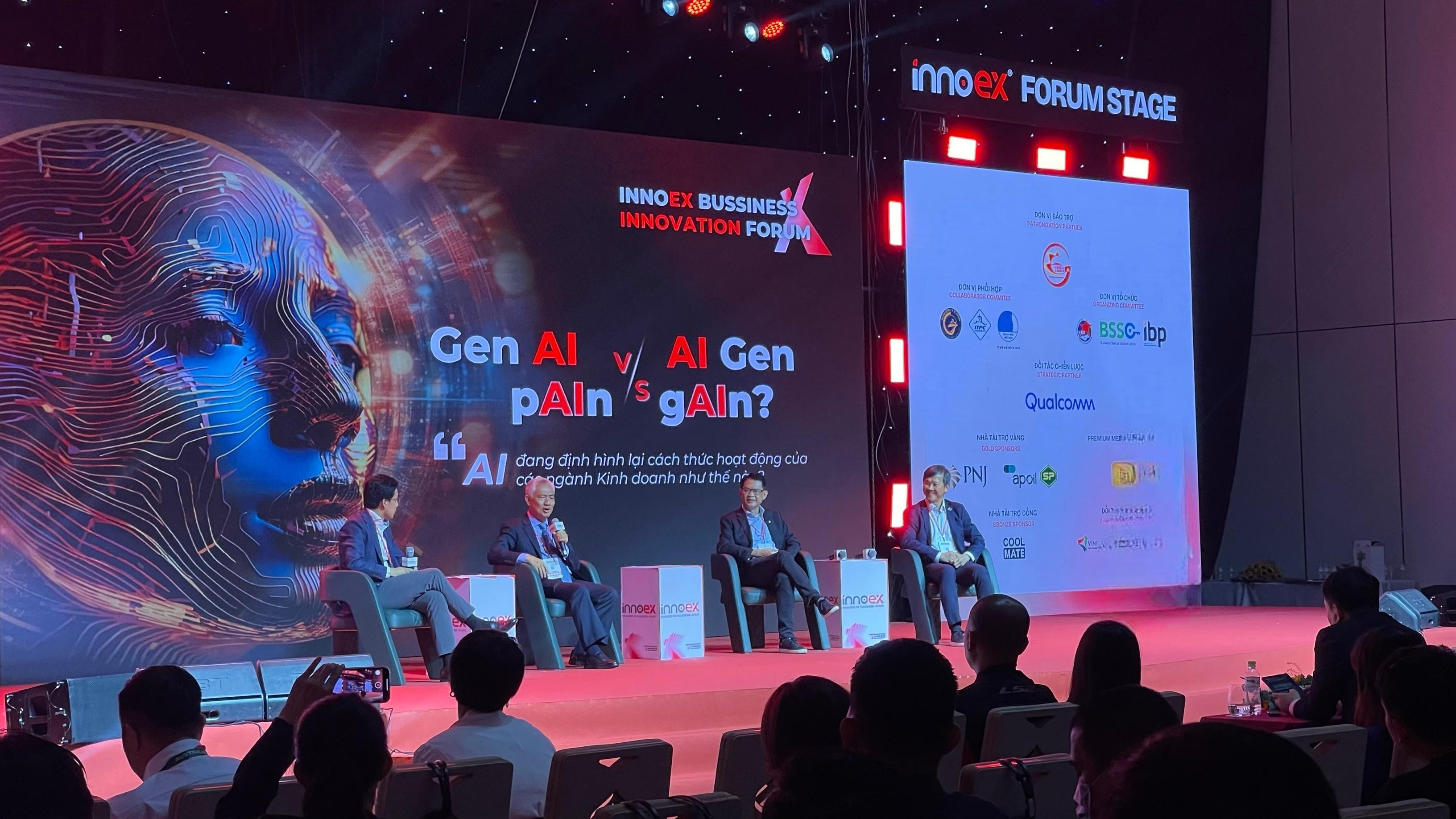On the morning of August 22, 2024, at InnoEx 2024, VinBrain's CEO Steven Truong joined a panel discussion with leaders from various industries. During the session titled “How AI Innovation is Reshaping Business Operations Across Industries,” CEO Truong shared valuable perspectives on the challenges and opportunities that AI brings to different sectors, especially healthcare.
CEO’s VinBrain emphasized that while integrating AI into business operations is an inevitable trend, it must be done thoughtfully. VinBrain has achieved considerable success in applying AI to healthcare products, which are now being adopted in leading hospitals both in Vietnam and globally. However, he acknowledged that deploying AI in the healthcare sector comes with its own set of challenges.

Drawing from his experience, mr. Steven pointed out that one of the biggest hurdles is accessing medical data, which is often fragmented and inconsistent across different hospitals. He stressed that training AI with high-quality healthcare data is crucial, as any errors could lead to serious consequences.
"Medical data needs to be accurately labeled by highly specialized doctors, and it often requires an additional round of validation to ensure quality. For AI solutions to be used by doctors, they must achieve over 90% accuracy. At VinBrain, we set high standards from the start, collaborating with numerous doctors to label and validate data, ensuring the necessary accuracy" mr. Steven explained.
Mr. Steven expanded on the challenges of applying AI, not only in healthcare but also across various other industries. According to VinBrain's CEO, the primary difficulties in AI implementation stem from two main factors: inconsistent data and the demand for high quality.

He also pointed out that similar challenges exist in industries like banking and manufacturing, where data is often stored in disparate locations and needs to be integrated for effective use. "AI can be most effectively applied to repetitive tasks that don't require human empathy" he noted. "In banking, AI can help automate transaction processing, while in manufacturing, it can optimize quality control processes."
Mr. Steven highlighted that AI adoption isn't just about technology; it's also about understanding the specific needs of each industry. "AI can have a positive impact when applied correctly, but it is essential to understand the unique characteristics and challenges of each sector to implement it effectively."
CEO's VinBrain also addressed a critical issue in the AI field today: the phenomenon of "hallucination," particularly in Generative AI technologies. This occurs when AI generates information or answers that aren't based on real data or could be inaccurate, yet are presented convincingly.

"Generative AI has the ability to create responses and information that aren't grounded in real data, which can lead to misinformation being accepted as fact," he emphasized. "This phenomenon, known as 'hallucination,' can be dangerous because users might trust the incorrect information provided by AI. It’s a problem that must be carefully managed to ensure AI not only performs effectively but also remains accurate and reliable."
He also mentioned three significant breakthroughs in Generative AI technology over the past two years, which he believes have greatly influenced AI's development:
When it comes to effectively communicating with businesses, mr. Steven shared that understanding their needs and pain points is crucial. "The responsibility of tech providers is to ensure that the product meets high standards—that's a given. However, to create effective communication, tech providers need to focus on the business's goals and challenges. We don’t just offer solutions; we demonstrate how those solutions can address their specific problems," he said.

CEO's VinBrain emphasized that empathy and listening are key to building effective relationships between technology providers and businesses.
In closing his discussion, mr. Steven stressed that while AI offers many opportunities, managing and applying this technology effectively is paramount. VinBrain is committed to leading the development of advanced AI solutions to enhance quality and efficiency in healthcare, while also addressing the challenges and leveraging the opportunities that AI technology presents.
Top